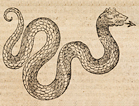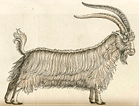Renaissance Science, Magic, and Medicine in Harry Potter’s World presents the following instructional resources for educators in middle and high schools, and in higher education institutions. The resources provide instructional guides and materials that an educator may adapt in whole or in part, as he or she deems most appropriate for their students’ interests, level, and academic goals.
Lesson Plans
Boggart and Fear in Harry Potter
- Grade level: 7–10 | subject: history and social studies
This lesson plan examines two text selections from Harry Potter and the Prisoner of Azkaban and Harry Potter and the Order of the Phoenix, books three and five of the series, which feature a boggart—a shape-shifter that turns into whatever one fears most. Students evaluate various characters’ fears represented by the boggart and build connections between their analyses of the characters’ fears and the students’ own experiences.
Genetic Traits in Harry Potter
- Grade level: 5–8 | subject: science and technology
This lesson introduces students to the concept of genetic inheritance. It consists of two classes and a pre-lesson activity in which students learn genetic terms and concepts, such as DNA, chromosome, gene, allele, homozygous, heterozygous, recessive and dominant genes, genotype, phenotype, complex traits, Mendelian inheritance, and Punnett square. Students then apply the concepts to identify possible inheritance patterns and genotypes of magical ability demonstrated by several characters in the Harry Potter series.
The lesson plans were developed in collaboration with Sahar Siddiqui and Annabella Kraut—English and Science teachers, respectively—formerly on the faculty of Charles E. Smith Jewish Day School in Rockville, Maryland.
Higher Education
This module is designed to introduce undergraduate and graduate students to important themes in the development of modern science and medicine. Inspired by the National Library of Medicine’s exhibition, Renaissance Science, Magic, and Medicine in Harry Potter’s World, this module focuses on the magical and esoteric traditions that shaped how past thinkers conceived of the study of nature in the Renaissance and early modern periods.
This module was developed in collaboration with Mark A. Waddell, Ph.D., a professor in the Lyman Briggs College of Science at Michigan State University.
Online Activities
Learn about the Renaissance philosophers whose study of alchemy, astrology, and natural philosophy shaped the development of Western science and medicine. Consider how Renaissance traditions influenced elements of the Harry Potter series.
View and color seven illustrations from Hortus Sanitatis (Garden of Health), a 1491 text depicting men studying the natural world. Consider how characters in Harry Potter also studied nature at the Hogwarts School of Witchcraft and Wizardry.
Color these animal illustrations from Historiae Animalium, a 1551 multi-volume zoological reference by Konrad Gesner. Each animal served as a Patronus, or a magical guardian, to a character in the Harry Potter series.
Other Resources
Continue to explore topics related to the Harry Potter series and the Renaissance traditions that informed modern science and medicine. Explore a list of suggested readings and online resources that have been prepared by Elizabeth Bland, curator of the Renaissance Science, Magic, and Medicine in Harry Potter’s World exhibition. These are sample resources identified at the time of project development in 2008. All resources were accessed in April 2017.
Continue to OTHER RESOURCES





